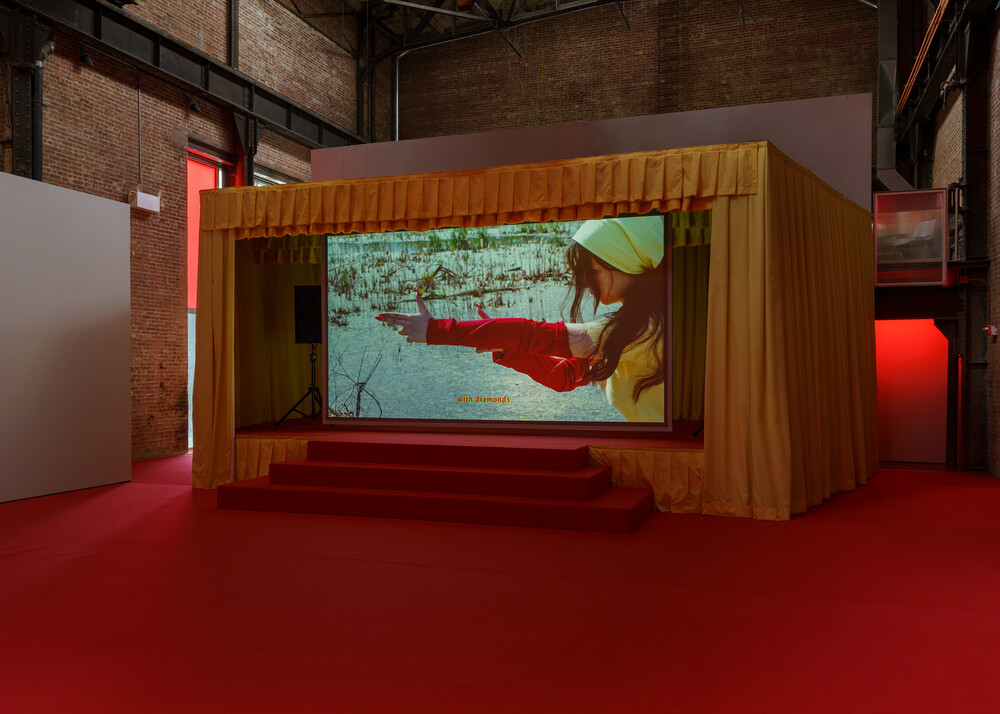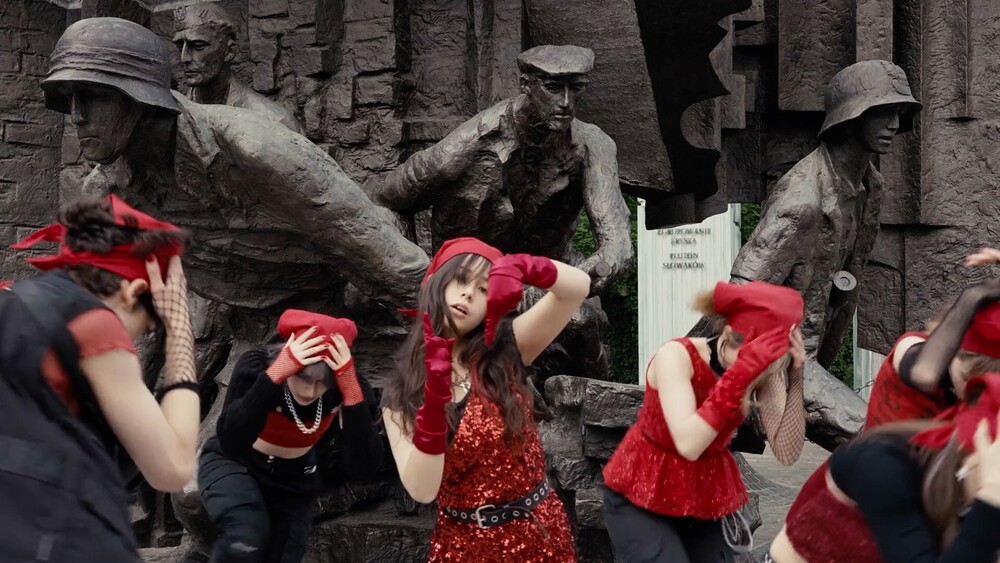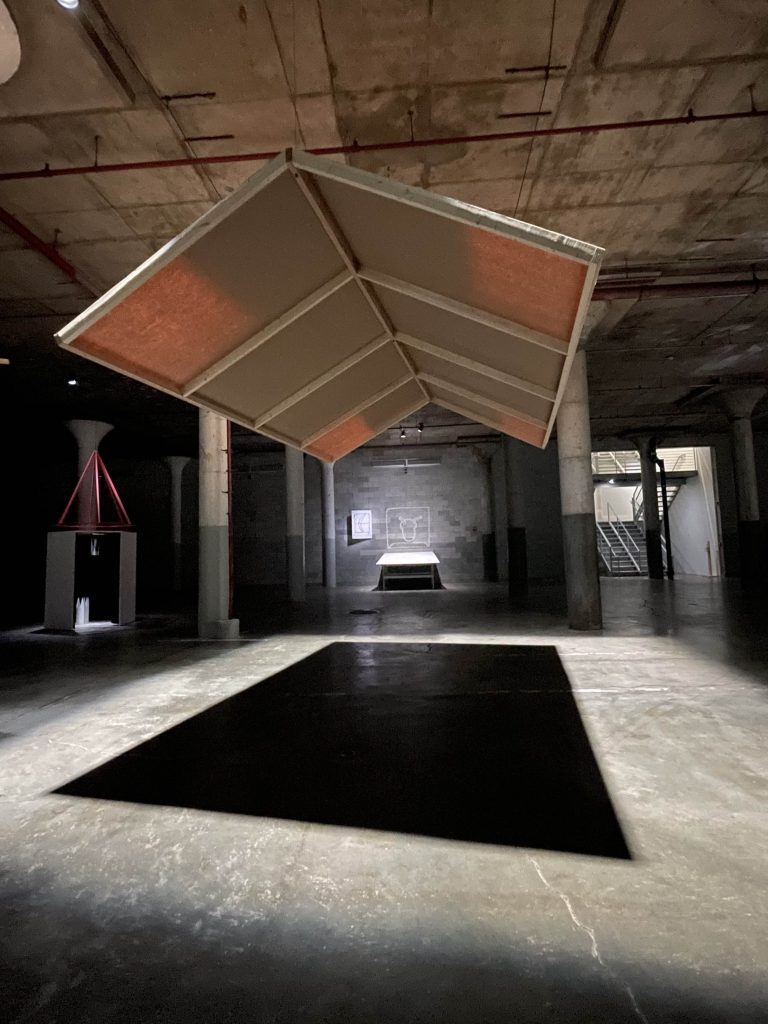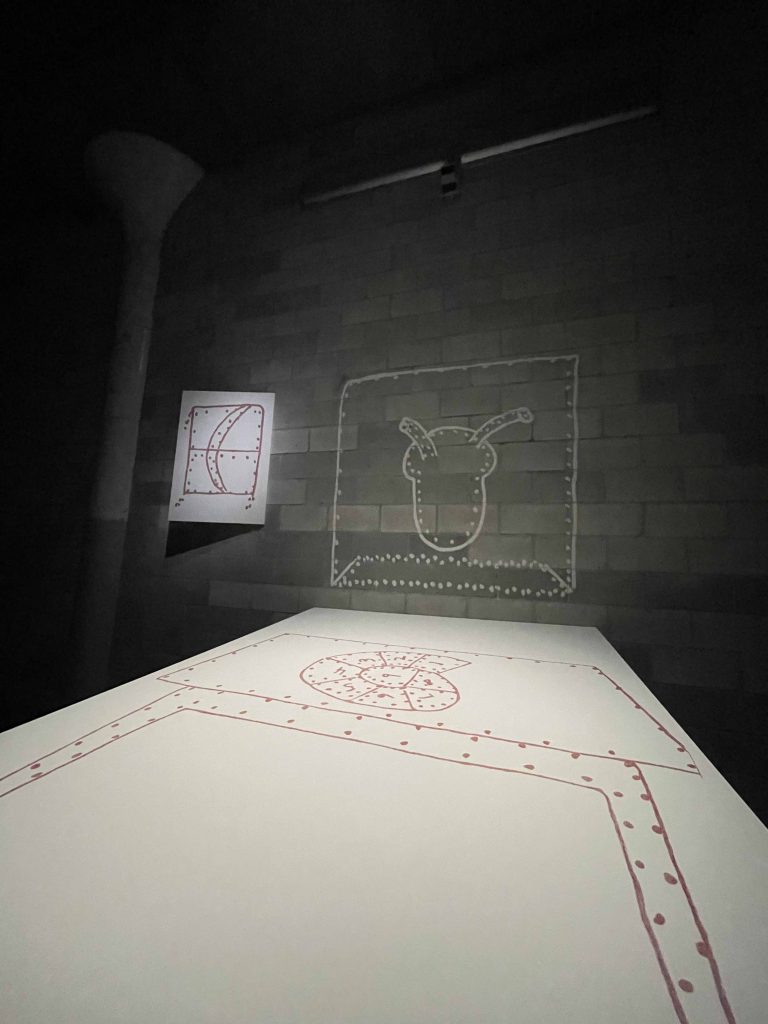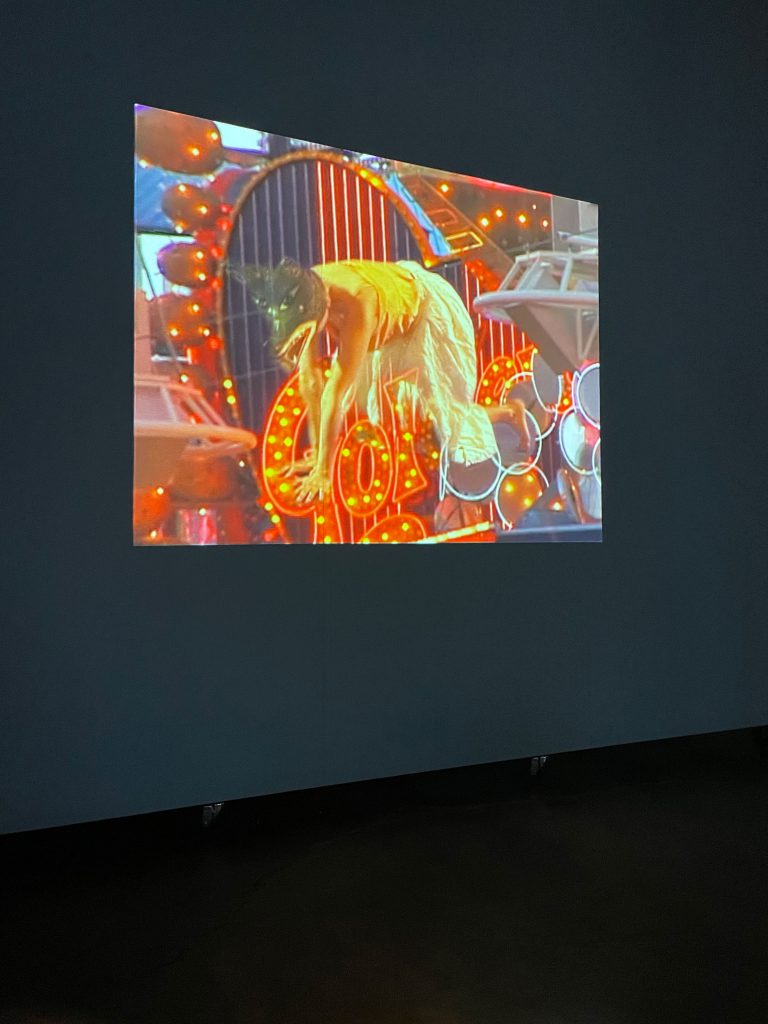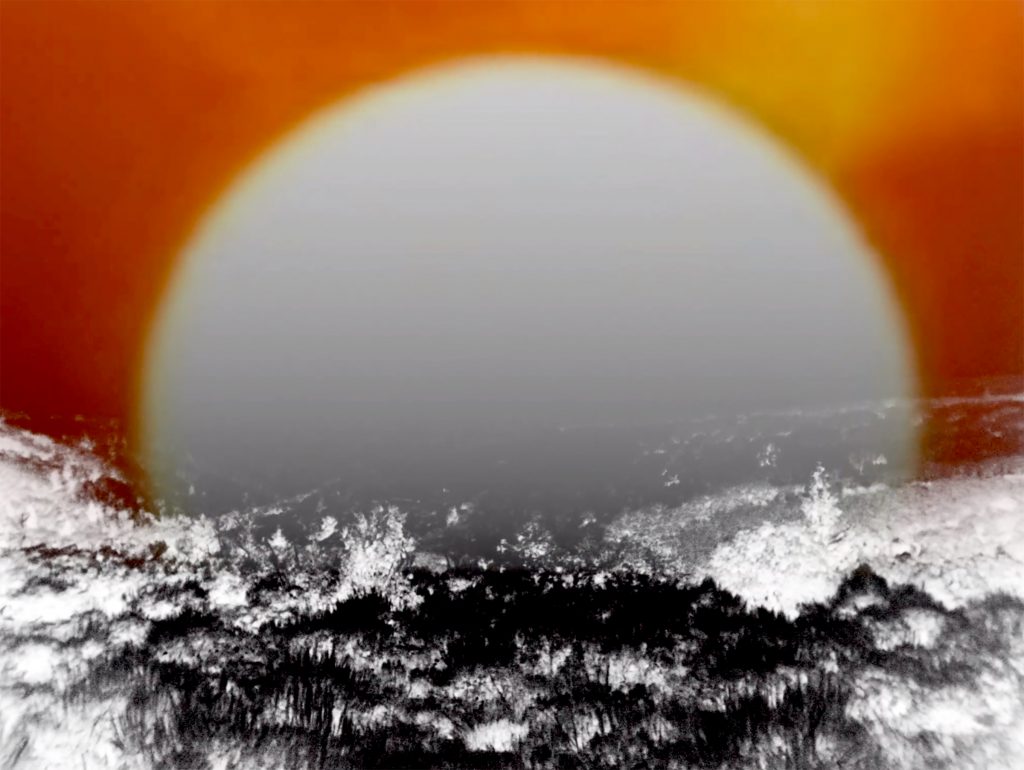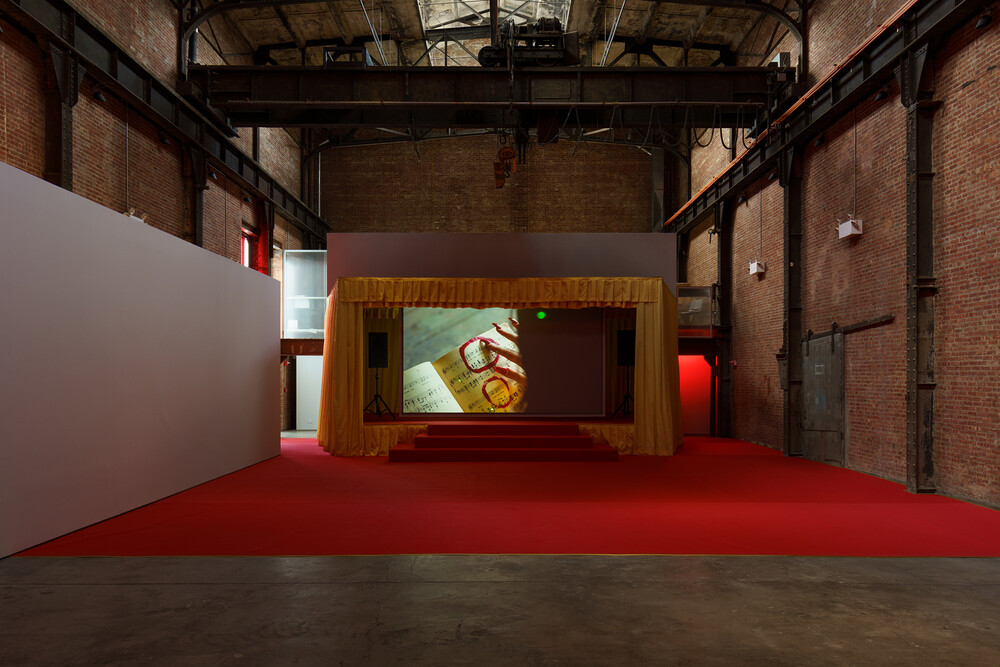The exhibit I visited was Diane Severin Nguyen’s video work If Revolution is a Sickness showing at the Sculpture Center in Long Island City. If Revolution is a Sickness is moving image work set in Warsaw, Poland that loosely follows the character of an orphaned Vietnamese girl, Weronica, who grows up to be a part of a K-POP inspired performance group. The first element of notice in this exhibit appears as soon as you make your way into the area, as the staging of the video is a work of art in its own merit. Edged by two PA speakers and pleated yellow fabric, red carpet covers the floor of the main center of the Sculpture Center where the stage is mounted. This red and yellow interior design of the space matches the color scheme of the film.
When the main character Weronica first appears on screen, she is just a little girl, alone and literally washed ashore in Poland, imbued with the film color palate, donning a yellow shirt and red sleeves. From reading the exhibition guide, I have learned that the colors are significant to the Cold War, but they also possess an undeniable aesthetic charm. The fusing of the exhibition setting with the moving image work itself by way of color matching gives the work an immersive quality that sucks you into the scene. Because I was the only one present at the time, I went to see this exhibition, I felt as if the spectacle was put on for me and that immersed me more into the work. The scenes featuring Weronica as a young girl are complicated by the cryptic voiceover that consists of various and contradictory musings on the idea of revolution from figures such as Mao Zendong. The voiceover made me curios as to what Weronica’s form of revolution would look like when she reaches an older age and could make sense of her circumstances and position in Poland.
We then flash forward to Weronica as an isolated ang gloomy teenager, privy to her thoughts through internal monologue spoken in Vietnamese with English subtitles. Through her internal monologue, we know she is wrestling with her status as an outside in Poland. She questions “do they really think I’m cute or just different?” However, Weronica does not let her self-doubt consume her, as she assumes that spectacle and performance will grant her the greatest agency. She says, ““If I don’t become an artist then I will just remain a victim. I must appear to myself as I wish to appear to others.”
From there, we get to the final segment of the work and my personal favorite, the pure spectacle. Gone is the revolutionary rhetoric and in its place is a bubblegum KPop music and a music video to go with it. A crew of Polish dancers donning matching yellow and red outfits performed over a deliciously catchy bubblegum maximalist autotune hyperpop song. The catchiness and lightness of the song is undercut by the setting of the performance which takes place in front of various dreary Polish war monuments. This disruption of spectacle comments on a specific generation shaping of a shared cultural national space, and the possibility of self-actualization within the realm of spectacle and performance.
I thoroughly enjoyed If Revolution is a Sickness because it is the type of moving image work that eschews narrative, yet wat is explored is knowable and palpable. The imagery, specifically how sound, image, and text all work conjointly and against each other to create such a stimulating, stirring, and visually stunning work that I am eager to see again.




